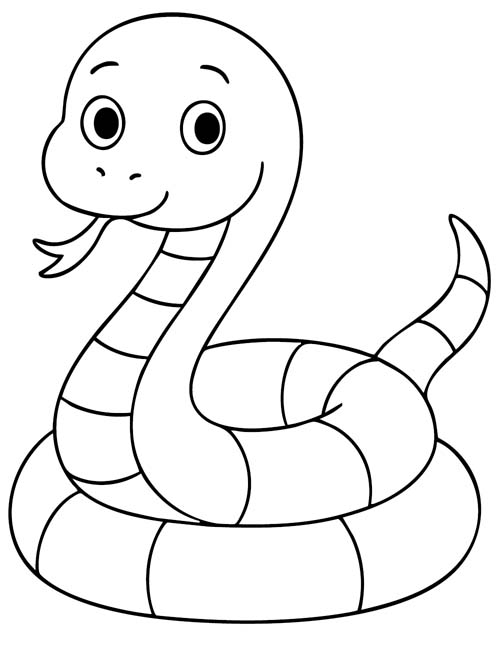Leanne's Printable Coloring Pages for Kids
Snake Coloring Pages
Welcome to my Snake Coloring Pages section!
Snakes are fascinating reptiles found in nearly every part of the world, from tropical rainforests to deserts. They come in all shapes, sizes, and colors... some are tiny and harmless, while others are large and powerful. Snakes play important roles in their ecosystems, controlling pests and inspiring myths, stories, and symbols in cultures around the globe.
Slithering silently across the forest floor, snakes blend seamlessly into the leafy underbrush, their sleek forms moving with grace and precision in their quest for prey and shelter.
In children's literature, scary snakes often embody danger and deceit, challenging the characters' bravery and wisdom through thrilling encounters and suspenseful moments.
A snake discreetly nestled in the lush foliage comes to life in our coloring pages, inviting you to explore the subtle art of camouflage by adding your creative colors to its intricate scales and the vibrant leaves around it.
A snake hissing, its tongue flickering in warning, is captured in our coloring pages, offering an exciting opportunity to add dramatic shades and textures as you color the vibrant scene, bringing the tension and beauty of this moment to life.
A snake swallowing its prey whole, showcasing the remarkable flexibility of its ribcage, is depicted in our coloring pages, inviting you to capture this natural spectacle with your colors, adding depth and realism to the cycle of life in the wild. Gives new meaning to having a "lump in your throat".
A snake's tongue, flickering out to sense its surroundings, is a focal point in our coloring pages, challenging you to use your palette to highlight this unique feature.
Five fun facts about snakes:
- Variety of Species: There are more than 3,000 known species of snakes in the world. They range in size from the tiny thread snake, which is just 10 centimeters long, to the reticulated python, which can reach lengths of up to 30 feet.
- Incredible Eaters: Snakes have the ability to consume prey much larger than their head. They can do this because their lower and upper jaws are not connected in the same way as in most animals, allowing them to open their mouths very wide. Also, their powerful muscles and flexible ribs help in swallowing large prey.
- Sensory Abilities: Snakes don't have external ears, and they don't hear sounds the same way humans do. Instead, they sense vibrations in the ground. Additionally, they have a special organ, the Jacobson's organ, that they use to "taste" the air, which helps them locate prey and understand their surroundings.
- Venomous and Non-Venomous: While some snakes are venomous, many are not. In fact, only about 600 species are venomous, and of those, only about 200 can do any real harm to humans.
- Shedding Skin: Snakes shed their skin regularly throughout their lives in a process called ecdysis. This is necessary for growth and to remove parasites. A healthy young snake may shed its skin every two weeks, while an adult snake typically sheds its skin four to eight times a year.
Snakes are a diverse group of reptiles with a wide range of interesting behaviors and adaptations. They play crucial roles in the ecosystem by controlling rodent populations, which in turn affects the spread of diseases and damage to crops. Despite their often scary reputation, snakes are fascinating creatures worthy of our respect and understanding.













































